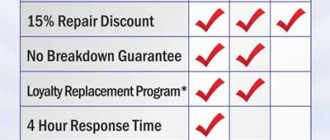
Performance Pay: Sales Spiff vs Commission
Introduction to Performance Pay
Unlocking the true potential of your sales team is an essential aspect of driving business growth and success. And when it comes to motivating and rewarding your sales professionals, performance pay models play a pivotal role. Two popular options that often come up in discussions are sales spiffs and commission structures. But which one is the right fit for your organization? In this blog post, we’ll explore the world of performance pay, dissecting the ins and outs of both sales spiffs and commissions. From understanding their pros and cons to designing effective pay structures, measuring performance, ensuring fairness, and even navigating compliance considerations – we’ve got you covered! So buckle up as we embark on this journey into the realm of performance pay models!
Understanding Sales Spiffs
Understanding Sales Spiffs
Sales spiffs are a type of performance-based incentive that companies use to motivate their sales teams and drive specific behaviors or outcomes. Unlike traditional commission structures, which provide a percentage of the total sale as compensation, spiffs offer additional bonuses or rewards for achieving certain targets or milestones.
These short-term incentives can take various forms, such as cash bonuses, gift cards, trips, or other tangible rewards. They are typically designed to be quick and easy to understand, with clear rules and objectives. This simplicity makes them highly effective in driving immediate action and creating a sense of urgency among salespeople.
One key advantage of sales spiffs is their flexibility. Companies can quickly implement new spiff programs in response to changing market conditions or strategic priorities. For example, if the company wants to promote a specific product line or boost sales during a slow period, they can create a targeted spiff program that incentivizes the desired behavior.
However, it’s important to note that while sales spiffs can be powerful motivators in the short term, they may not always align with long-term goals and objectives. Salespeople might focus solely on earning the immediate reward without considering the overall impact on customer relationships or long-term business sustainability.
Furthermore, there is also potential for unintended consequences when implementing spiff programs. Some employees may become overly fixated on meeting spiff targets at all costs, potentially sacrificing ethical considerations or neglecting other aspects of their job responsibilities.
Though,
sales
spiffs serve as an excellent tool for boosting motivation,
encouraging healthy competition among team members,
and driving specific behaviors that align with short-term business objectives.
To ensure maximum effectiveness,
companies must carefully design their
spiff programs,
setting realistic targets aligned with broader organizational goals.
Regular evaluation and adjustment will help refine these programs over time based on feedback from both customers and employees
The Role of Commission in Sales Compensation
The Role of Commission in Sales Compensation
Commission is a key component of sales compensation, and it plays a crucial role in motivating sales teams to achieve their targets. Unlike fixed salaries or hourly wages, commission provides an incentive for salespeople to go above and beyond in closing deals and generating revenue.
One of the main advantages of commission-based pay is its direct link to performance. When salespeople earn a percentage or a set amount for each sale they make, it creates a clear connection between effort and reward. This can be highly motivating as individuals see the potential for higher earnings when they excel at their job.
Commission also aligns the interests of both the company and the salesperson. By tying compensation directly to results, companies can ensure that their employees are focused on driving revenue growth. Sales professionals, on the other hand, have the opportunity to substantially increase their income by exceeding targets.
Another benefit of commission-based pay is its flexibility. Companies can design different commission structures based on various factors such as product lines, customer segments, or desired outcomes. This allows organizations to tailor compensation plans that incentivize specific behaviors or objectives.
However, there are some considerations when implementing commission-based pay structures. It’s important for companies to strike the right balance between base salary and commission rates to attract top talent while keeping costs under control. Additionally, careful thought must be given to setting realistic targets so that motivation isn’t overshadowed by unattainable goals.
In conclusion,
commission serves as a powerful tool in driving sales performance through its direct link with results and providing financial incentives for achieving targets. Its flexibility allows companies to align compensation with strategic objectives while motivating employees towards success.
Pros and Cons of Sales Spiffs
Sales spiffs, also known as incentives or bonuses, are a popular form of performance pay in sales compensation. They offer a unique set of advantages and disadvantages that can significantly impact the effectiveness of your sales team.
One major advantage of sales spiffs is their immediate impact on motivation. By offering short-term rewards for achieving specific goals or targets, salespeople are incentivized to push harder and achieve more in a shorter period. This can lead to increased productivity and higher levels of engagement among your sales team.
Moreover, sales spiffs provide flexibility in terms of focus areas. They can be tailored to target specific products, services, or customer segments that require extra attention. This allows organizations to strategically direct their efforts towards driving desired outcomes.
On the flip side, there are some drawbacks associated with using sales spiffs as a primary form of performance pay. One concern is the potential for short-sightedness – if individuals are solely focused on earning quick rewards through spiffs, they may neglect long-term relationship building and fail to prioritize sustainable growth.
Additionally, over-reliance on spiffs can create an atmosphere where employees constantly expect additional incentives rather than viewing them as exceptional rewards for exceptional achievements. This may undermine intrinsic motivation and reduce overall job satisfaction.
In conclusion (not concluding), while there are clear benefits to incorporating sales spiffs into your performance pay structure – such as immediate motivation boosters and adaptable targeting – it’s important to carefully consider how much weight you give these incentives relative to other forms of compensation like commission or base salary. Finding the right balance will ensure optimal results from your performance pay program while avoiding potential negative consequences.
Pros and Cons of Commission
Pros and Cons of Commission
Commission-based sales compensation has been a popular approach for motivating and rewarding sales teams for decades. However, like any pay model, it comes with its own set of pros and cons.
On the positive side, commission provides a clear incentive for salespeople to perform well. It aligns their efforts directly with the company’s revenue goals, encouraging them to go above and beyond in closing deals. Additionally, commission can be highly motivating as it allows individuals to directly benefit from their hard work and success.
Furthermore, commission-based pay structures can attract top talent by offering the potential for significant earnings. This can result in a competitive environment where salespeople strive to outperform each other, driving overall performance upwards.
However, there are drawbacks to consider as well. One limitation is that commissions may fluctuate significantly month-to-month or year-to-year depending on market conditions or individual performance. This variability can create financial uncertainty for some salespeople who prefer stability in their income.
Additionally, relying solely on commissions may lead to short-term thinking among sales representatives who prioritize closing quick deals rather than building long-term relationships with customers. This could potentially harm customer satisfaction and repeat business over time.
Another consideration is that commission-based systems might incentivize unethical behavior if not properly monitored or regulated. Salespeople may be tempted to resort to aggressive tactics or misrepresentation in order to secure higher payouts.
In conclusion…
While there are certainly advantages associated with using commission-based pay models such as motivation and alignment with company goals, it’s important for businesses to carefully weigh these benefits against the potential downsides such as income volatility and ethical concerns. Finding the right balance between base salary and variable incentives will depend on factors specific to each organization’s industry dynamics and employee needs.
When to Use Sales Spiffs
When to Use Sales Spiffs
Sales spiffs can be a powerful tool in motivating and incentivizing sales teams. But when is the right time to use them? Here are some factors to consider:
1. Product Launch or Promotion: If you’re introducing a new product or running a limited-time promotion, sales spiffs can create urgency and drive immediate results. Offering extra incentives for achieving specific targets during these periods can help generate excitement among your sales team.
2. Slow Sales Periods: During slow seasons or economic downturns, it may be necessary to boost morale and motivate your sales team with short-term incentives. Sales spiffs can provide an extra push to increase productivity during challenging times.
3. Targeting Specific Goals: When you have specific goals that need immediate attention, sales spiffs can be used as a focused incentive strategy. Whether it’s increasing market share, boosting customer retention rates, or driving revenue from certain product lines, targeted sales spiffs can align your team’s efforts towards achieving those objectives.
4. Encouraging Upselling/Cross-selling: If you want to encourage your sales reps to upsell or cross-sell additional products or services, implementing sales spiffs tied directly to these activities can effectively drive desired behaviors.
5. Rewarding High Performers: Sales spiffs can also be used as recognition and rewards for top performers within the team who consistently exceed their targets. By offering higher commission rates or exclusive bonuses through well-designed sales spi
When to Use Commission
When to Use Commission
Commission-based compensation can be a powerful motivator for sales teams, but it may not be the best fit for every situation. Here are some factors to consider when deciding whether to use commission as part of your performance pay structure.
1. Sales Cycle Length: If your sales cycle is long and involves multiple touchpoints with customers, commission can help incentivize your team to stay engaged and motivated throughout the process. It rewards them for their efforts in closing deals and encourages them to nurture relationships over time.
2. High Ticket Sales: Commission is particularly effective when selling high-value products or services. The potential earnings from commissions provide a strong incentive for salespeople to prioritize these high-ticket items and put in extra effort to secure those big wins.
3. Individual Performance Focus: When you want to emphasize individual performance and reward top performers, commission-based compensation can be a great choice. It allows you to differentiate pay based on results achieved by each salesperson, creating healthy competition within the team.
4. Clear Metrics and Targets: Commission works best when there are clear metrics and targets that salespeople can strive towards. Having specific goals helps align their efforts with company objectives, ensuring everyone understands what they need to do in order to earn their commissions.
5.
Ongoing Revenue Generation: If your business relies heavily on recurring revenue or upselling opportunities, using commission as part of your compensation plan can encourage proactive account management and drive additional revenue growth from existing customers.
6.
Changing Market Conditions : In industries where market conditions fluctuate frequently or new products/services are introduced regularly, using commission provides flexibility in adjusting incentives based on demand trends or changing priorities.
Remember that every organization is unique, so it’s essential to evaluate your specific circumstances before deciding whether commission should play a role in your performance pay model. Taking into consideration factors such as sales cycle length, ticket value of products/services sold, focus on individual performance versus team collaboration,
presence of clear metrics/targets, ongoing revenue generation, and changing market conditions can

Designing an Effective Performance Pay Structure
Designing an effective performance pay structure is crucial for motivating and rewarding sales teams. It involves creating a system that aligns with company goals, incentivizes desired behaviors, and provides fair compensation. There are several key factors to consider when designing such a structure.
It’s important to clearly define the metrics and targets that will be used to measure performance. These should be specific, measurable, achievable, relevant, and time-bound (SMART). By setting clear expectations, employees have a clear understanding of what they need to achieve in order to earn their incentives or commissions.
Next, it’s essential to determine the payout structure. This includes deciding on the percentage or amount of incentive or commission earned for meeting various levels of performance targets. It may involve tiered structures where higher levels of performance result in greater rewards.
Additionally, consideration should be given to whether there will be any caps or limits on earnings. While this can prevent excessive payouts in some cases, it could also hinder top performers from reaching their full potential if they feel there is no opportunity for additional reward beyond a certain point.
Furthermore, timing is important in designing the pay structure. Will incentives or commissions be paid out monthly? Quarterly? Annually? Choosing the right frequency ensures timely recognition and motivation for employees while also allowing enough time for accurate measurement of results.
Lastly but importantly is communication and transparency about the pay structure with employees. Clear explanations should be provided so that everyone understands how their efforts translate into compensation. Regular updates on progress towards goals can also help keep employees engaged and motivated throughout the year.
In conclusion (as per instructions), designing an effective performance pay structure requires careful consideration of metrics/targets, payout structures/tiers/caps/limits/frequency , as well as transparent communication with employees about how their efforts directly impact their compensation
Combining Sales Spiffs and Commission
Combining Sales Spiffs and Commission
When it comes to designing an effective performance pay structure for your sales team, combining sales spiffs and commission can be a winning strategy. Sales spiffs are short-term incentives that reward specific behaviors or achievements, while commission is a percentage of the value of a sale that is paid out over time.
By combining these two elements, you can create a powerful incentive system that motivates your sales team to achieve both short-term goals and long-term success. The immediate gratification provided by sales spiffs can boost morale and drive quick results, while commission provides ongoing motivation for sustained performance.
One advantage of this combination approach is its flexibility. You have the freedom to tailor the amount and frequency of spiffs based on specific objectives or promotions, while still maintaining the stability and predictability of commission as a base compensation component.
This hybrid model also addresses potential drawbacks associated with relying solely on one type of incentive. For example, if you only use commission-based compensation, there may be periods where sales reps struggle to meet targets without any additional motivation or rewards along the way. On the other hand, relying solely on spiffs could lead to inconsistent results as reps focus primarily on short-term gains rather than building lasting customer relationships.
Combining sales spiffs and commission allows you to strike a balance between immediate rewards and long-term growth. It encourages your team members to consistently perform at their best while providing timely recognition for exceptional efforts.
To implement this approach successfully, it’s important to establish clear guidelines for when each type of incentive will be used. This ensures that both individual accomplishments and overall goals are appropriately rewarded throughout different stages of your business cycle.
In conclusion…
The combination of sales spiffs and commission offers numerous benefits in terms of motivating your sales team, balancing short-terms wins with long-term growth objectives, promoting consistency in performance levels, and allowing for customization based on specific needs or campaigns. By carefully designing your performance pay structure and regularly evaluating its effectiveness, you can create a winning formula
Measuring and Evaluating Performance
Measuring and evaluating performance is a crucial aspect of any performance pay structure. Without proper measurement, it becomes challenging to determine the effectiveness of the compensation model and make informed decisions for improvement.
One way to measure performance is through sales metrics such as revenue generated, number of new customers acquired or products sold. These quantitative measurements provide concrete data that can be easily tracked and compared across individuals or teams.
However, it’s important not to overlook qualitative measures as well. Customer satisfaction ratings, feedback from clients or peers, and overall team collaboration are all valuable indicators of an individual’s performance. These subjective factors can provide insights into areas for improvement or highlight exceptional skills that may not be captured by numbers alone.
Regularly reviewing and analyzing these metrics allows organizations to identify top performers, understand patterns of success, and address any gaps in performance. It also provides opportunities for coaching and development to help employees reach their full potential.
In addition to individual assessments, evaluating team dynamics is essential in determining how well a compensation model is working. Are teams collaborating effectively? Is communication flowing smoothly? Assessing group dynamics helps ensure fairness within the organization while promoting healthy competition among employees.
By consistently measuring and evaluating performance using both quantitative and qualitative methods, companies can refine their pay structures over time based on real data rather than assumptions or guesswork. This iterative approach promotes fairness while encouraging continuous improvement within the organization.
Ensuring Fairness and Motivation
Ensuring Fairness and Motivation
Fairness and motivation are two key factors in any performance pay structure. In order to ensure fairness, it is important to establish clear and transparent criteria for evaluating performance. This can include objective metrics such as sales targets or customer satisfaction ratings.
Additionally, it is crucial to communicate these criteria effectively to all employees so that they understand what is expected of them. This helps prevent any perception of favoritism or bias in the allocation of rewards.
To further promote fairness, consider implementing a system of checks and balances where multiple individuals are involved in evaluating performance. This can help mitigate potential biases and provide a more accurate assessment.
In terms of motivation, it is essential to align the incentives with desired behaviors. For example, if you want your sales team to focus on acquiring new customers, consider offering higher rewards for new client acquisitions rather than repeat business.
Regularly reviewing and adjusting the performance pay structure can also help maintain motivation levels. If employees feel that their efforts are not being adequately rewarded or recognized, they may become demotivated.
Ensuring fairness and maintaining high levels of motivation requires ongoing evaluation and adjustment of the performance pay structure based on feedback from employees and an understanding of their needs and motivations.
Case Studies: Successful Implementation of Performance Pay
Case Studies: Successful Implementation of Performance Pay
One of the best ways to understand the effectiveness of performance pay models is by looking at real-life case studies. These success stories provide valuable insights into how different organizations have implemented performance pay and achieved positive outcomes.
In a case study conducted by Company X, they introduced sales spiffs as part of their performance pay structure for their sales team. The results were impressive, with an overall increase in sales revenue by 20% within one quarter. The sales representatives were motivated to reach specific targets and earn additional incentives through the spiff program. This led to increased focus, productivity, and ultimately, higher sales numbers.
Another noteworthy example is from Company Y, which opted for a commission-based compensation model for its sales force. By aligning individual commissions with personal goals and company objectives, they saw a significant boost in both employee engagement and revenues. Sales representatives became more driven to close deals as they realized that their efforts directly impacted their earnings.
These case studies demonstrate that successful implementation of performance pay requires careful consideration of various factors such as company culture, industry norms, and employee motivations. It’s not just about choosing between sales spiffs or commission; it’s about creating a cohesive system that encourages high performance while ensuring fairness across the board.
By analyzing these real-world examples, organizations can gain valuable insights on how to design effective performance pay structures tailored to their specific needs. Whether it’s using sales spiffs or commission or combining both approaches creatively – there is no one-size-fits-all solution.
The key takeaway here is that implementing an effective performance pay model involves understanding your organization’s unique dynamics and finding the right balance between motivating employees and achieving business goals.
Stay tuned for our next blog section where we will discuss common mistakes to avoid when implementing performance pay systems!
Common Mistakes to Avoid
Common Mistakes to Avoid
When it comes to designing a performance pay structure, there are several common mistakes that organizations often make. Avoiding these pitfalls can help ensure the effectiveness and fairness of your compensation program.
One common mistake is implementing overly complicated pay structures. While it may seem like a good idea to have multiple layers of incentives and bonuses, this can actually confuse employees and make it difficult for them to understand how their performance impacts their pay. Keeping the structure simple and transparent will lead to greater motivation and clarity.
Another mistake is failing to align the goals of the compensation program with the overall objectives of the organization. If your sales spiffs or commission plans are not directly tied to key business metrics such as revenue targets or customer satisfaction, then they may not be driving the desired behaviors or results.
Additionally, some organizations make the mistake of setting unrealistic targets or quotas for their sales teams. When goals are unattainable, it can quickly demoralize employees and lead to disengagement. It’s important to set challenging but achievable targets that motivate your sales team without overwhelming them.
Not providing ongoing feedback and coaching is another common error in performance pay management. Regular communication about performance expectations, progress towards goals, and areas for improvement is essential for keeping employees engaged and motivated.
Failing to regularly review and update your performance pay structure can also hinder its effectiveness. Markets change, business strategies evolve, and what worked well in the past may no longer be relevant or impactful today. Continually evaluating your compensation programs ensures they align with current business needs.
By avoiding these common mistakes in designing your performance pay structure, you’ll create a system that motivates employees while fostering fairness within your organization.
Compliance and Legal Considerations
Compliance and Legal Considerations
When it comes to implementing a performance pay structure, it is crucial for companies to consider compliance and legal requirements. Failure to do so can result in costly penalties and damage to the company’s reputation.
One key consideration is ensuring that the chosen performance pay model complies with applicable labor laws. This includes adhering to minimum wage requirements, overtime regulations, and any other relevant employment laws specific to your industry or location.
Additionally, companies must be mindful of equal opportunity laws and ensure that their performance pay structure does not discriminate against employees based on protected characteristics such as race, gender, age, or disability. It is essential to establish clear criteria for determining eligibility for sales spiffs or commission and ensure that these criteria are applied consistently and fairly across all employees.
Confidentiality agreements are another aspect of compliance that should be addressed when designing a performance pay structure. If sensitive customer information or trade secrets are involved in the sales process, measures must be taken to protect this data from unauthorized access.
To further mitigate risk, it is advisable for companies to consult with legal professionals who specialize in employment law before implementing a new performance pay system. These experts can provide guidance on best practices and help navigate any potential legal challenges that may arise.
By prioritizing compliance considerations throughout the design and implementation stages of a performance pay structure, companies can minimize legal risks while maximizing motivation among their sales team.
Conclusion: Choosing the Right Performance Pay Model
Choosing the right performance pay model is a critical decision for any organization. It requires careful consideration of various factors such as company culture, sales goals, and individual motivations. While both sales spiffs and commission have their benefits and drawbacks, there is no one-size-fits-all approach.
When deciding between sales spiffs and commission, it’s essential to analyze the specific needs of your business. Sales spiffs can be effective for short-term boosts in motivation or when introducing new products or driving specific behaviors. On the other hand, commission structures provide long-term incentives and align with overall sales objectives.
Designing an effective performance pay structure involves finding the right balance between immediate rewards and long-term goals. Combining both sales spiffs and commission can be a winning strategy that provides instant gratification while also fostering sustained motivation.
Measuring performance accurately is crucial to ensure fairness in compensation. Implementing clear metrics and tracking systems allows you to objectively evaluate individual achievements against set targets.
Motivation plays a significant role in shaping performance outcomes. By understanding what motivates your sales team – whether it’s recognition, financial rewards, or career growth opportunities – you can tailor your performance pay model accordingly.
Fairness should always be at the forefront when designing a performance pay system. Transparency in setting targets, providing regular feedback, and ensuring equal opportunities for all employees promotes trust within the organization.
Looking at case studies of successful implementation of performance pay models can offer valuable insights into real-world examples of what works best for different industries or organizations with similar characteristics to your own.
Compliance with legal regulations regarding compensation practices is essential to avoid any potential legal issues down the line. Familiarize yourself with local labor laws before finalizing your performance pay structure.
In conclusion (without using those words!), choosing the right performance pay model requires thoughtful analysis of various factors unique to your organization’s needs. By considering pros and cons, designing an effective structure, measuring results accurately, motivating your sales team, ensuring fairness, and complying with legal requirements, you can create






